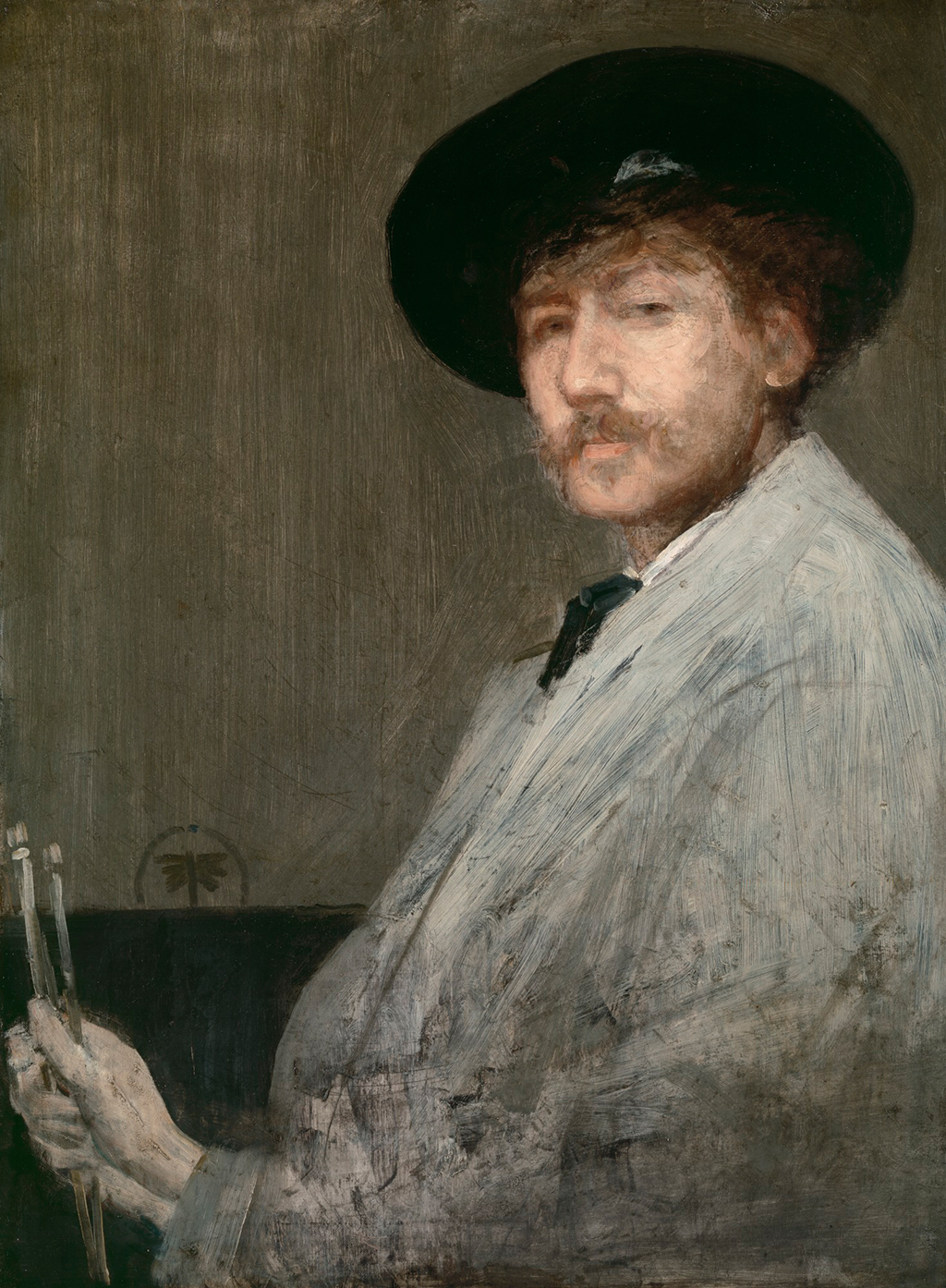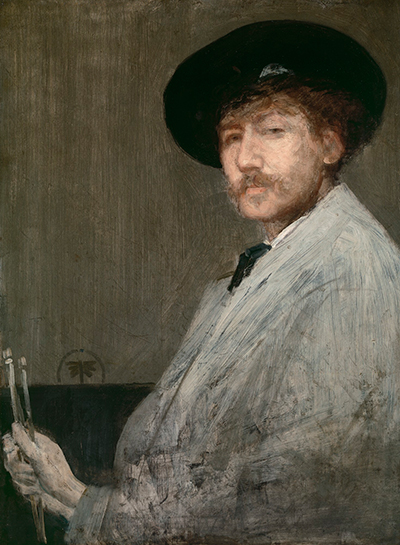James Abbott McNeill Whistler is best known for his painting of his mother, correctly called Arrangement in Grey and Black No. 1, but informally known simply as Whistler's Mother.
But Whistler was known for many other paintings too, amongst them a number of self-portraits, such as this one: Arrangement in Grey: Portrait of the Painter. Whistler has used his familiar technique of layering on the paint until the image emerges from the thickness of the strata, almost as though the image existed on the bare canvas, needing the layers and layers of paint to develop through, almost like a photographic print becoming visible in a developer. This style of Whistler's, used in many of his paintings, especially those from his more mature years, is distinction and adds great depth of dimension and texturing to the appearance of his paintings.
In the painting, Whistler is wearing a shapeless grey smock – presumably to protect his daywear from the ravages of his craft – and it is this garment that gives the title its colouration. The painter is seated side on to the mirror that he can be assumed to have been using, turning his head to examine his own form: the quizzical penetrating gaze beneath the boyish tumble of curls, the firm mouth and chin over the rather bulky body – revealing something of a paunch that is also seen in a number of other self-renderings. This refusal to portray himself as he was not is one reason that Whistler was rather less successful as a portrait painter – he refused to make his subjects look more attractive than they were in life, instead aiming for a grim realism that was rather unflattering to society figures who longed for attractive images to hang on their walls.
The light bulk of the smock is counterpointed by the small, but strong hue of the hat that the painter wears, and the painting's composition is deceptive: apparently a simple background against which the painter slumps, two brushes clutched in one hand, while his face looks out assessingly. But the balance of the work makes it compelling – the background's shade of receding brownish grey is the perfect complement to the light grey of the smock, which in turn holds the details of the face and dark hat. The eye is drawn to the image as a whole, rather than darting from feature to feature. The whole adds up to a restful image that draws the eye, even as the viewer is unsure quite why their attention is drawn to this image in particular. The portrait was painted in around 1872, and was quickly acquired by a long-term friend and patron of Whistler, Alexander Ionides. The painting remained in the family for several generations, before being passed on and ultimately ending up in the Detroit Institute of Arts, where it hangs today.





